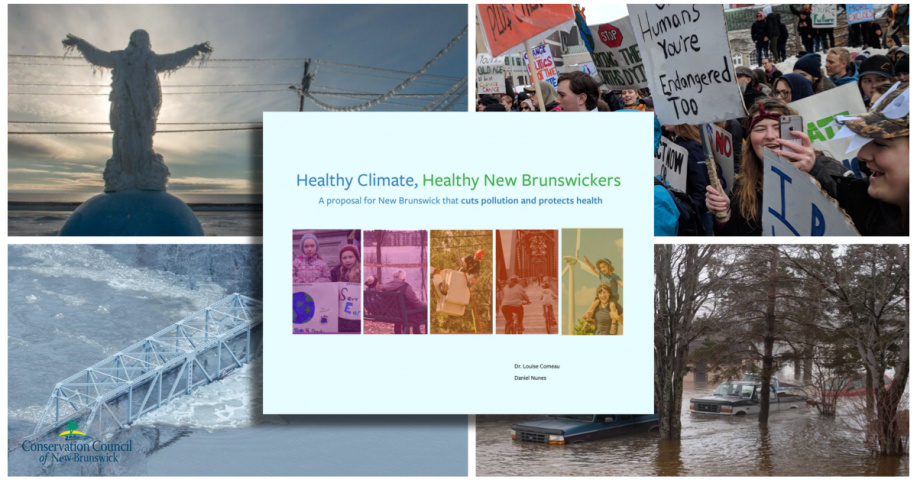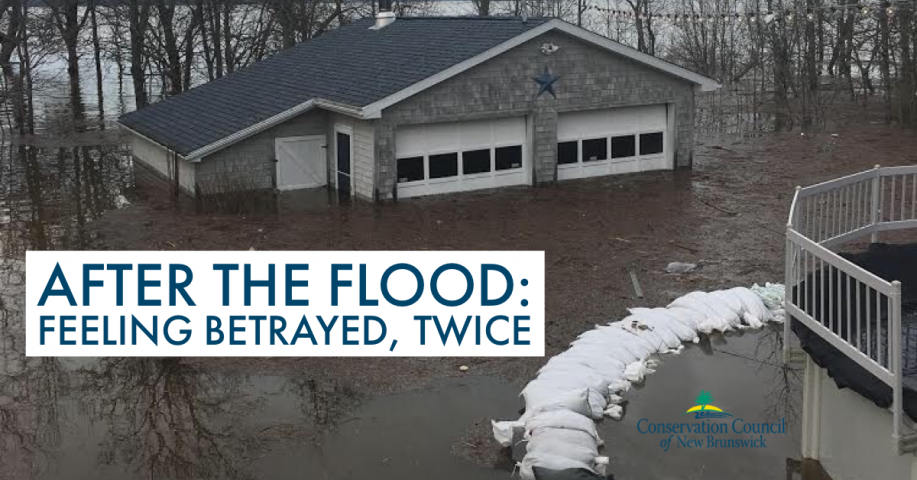Juliette Bossé and Lisa Sanderson replaced their basement after the 2018 floods, thinking it was a once in a lifetime event.

When Lisa Sanderson and Juliette Bossé bought their dream house in Martinon, Saint John, they didn’t realize how quickly it would become a nightmare.
Sanderson was sleeping in their basement one morning in early May, 2018. She put her foot down and felt water on the floor.
“It was panic, because you don’t really know what to do at that point. You don’t know how fast it’s coming in,” she said.
Later, if you walked by their home you would see two things: a cute mailbox with a portmanteau of their names painted on it, and a backyard full of horrors.
Water slowly swallowed their garage and poured into their basement.
They always wanted to live close to the Wolastoq — the beautiful and bountiful river — but now, they felt betrayed by it.
Being teachers, the couple recruited high school students to help secure their home.
Thousands of sandbags were delivered and stacked into a wall that could have been dubbed the eighth wonder of the world. City crews and neighbours also helped.
“We realized in this moment, we couldn’t do this ourselves,” Sanderson said.
“It was just amazing to see how much help we had,” Bossé said.
When all was said and done, Sanderson and Bossé replaced their basement floor. They also gutted four feet of walls to prevent mold from growing.
“At that time it was, ‘Oh, this is a 100-year event.’ The thought of re-doing our basement didn’t seem that odd. We had it done right away,” Sanderson said.
The couple were relieved they made it through spring and had come out the other side. Now they were just trying to return to normal.
But the effects of climate change are long-lasting and New Brunswick’s governing bodies need to consider more than flooded roads and power outages, according to a new report released June 25 by the Conservation Council. It notes that “climate change does not travel alone,” and that its effects are intensifying the existing risks brought on by the way we do forestry, the way we use our land, and the way we develop our communities.
The report shows this adds up to serious consequences for our physical and mental health.
“Mental health professionals are increasingly worried about the psychological effects of climate change. Research shows climate change effects such as flooding and extended power outages can undermine well-being and cause ecoanxiety, a ‘chronic fear of environmental doom,’” it reads.

As the report’s analysis shows, the public health threats will only worsen over the next 30 years without serious action from government, businesses and industries to reduce the carbon pollution fueling these changes.
‘Perfect storm’
As soon as Sanderson heard on the radio the 2019 flood watch was underway, she felt sick.
“Like someone was sitting on my chest,” the band teacher recalled.
Bossé said the stress affects her wife, even though Sanderson doesn’t always notice when it does.
Sanderson had planned to take a large group of students to Toronto shortly after the floods. She had also planned a music festival for students and had signed up to play trumpet in multiple bands as part of it.
“The two peak days of the flood were the two exact days I had 225 students performing in a music festival,” she said.
“It was the perfect storm,” Bossé added.
Questions remain
But like an immune system responding to a disease previously encountered, they sprung into action.
Between the two floods, they hadn’t had time to build any structure, like a flood wall, as they had hoped. Still, more students, neighbours and city crews came to the rescue.
Again, the great wall of sandbags was constructed.
This year, water never entered their house, although only through the use of multiple sump-pumps and a Herculean amount of effort.
Now, the two have been left wondering what to do. Do they abandon their dream house? They’ve looked at real estate, but is anyone really going to buy in the flood zone? Do they build the flood wall? What if the water goes up another metre in 10 years?
Sanderson was told they need three flood-free years before they can even try to get insurance. Now she’s trying to receive a clear definition of “flood-free.”
For now, they’ve decided to stay. But the floods have altered how they see their property.
“I don’t think anyone can go through this without it changing you,” Sanderson said.
She only recently walked the 500 metres from her back door down the beach, once a selling point for the house.
“It’s still beautiful. But cautiously so.”
This is part two of our new series: After the flood: how climate change and the extreme weather it’s fueling affect New Brunswickers’ physical and mental health
Recommended links:

